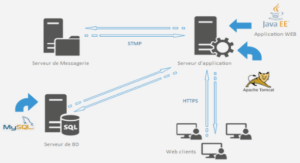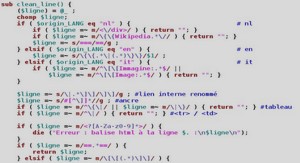Learning-TCP A Media-aware Congestion Control Algorithm for Multimedia Transmission
TCP dominates today’s communication protocols at the transport layer in both wireless and wired networks, due to its simple and efficient solutions for end-to-end flow con- trol, congestion control and error control of data transmission over IP networks (see [9] and [11]). However, despite the success of TCP, the existing TCP congestion control is considered unsuitable for delay-sensitive, bandwidth-intense, and loss-tolerant mul- timedia applications, such as real-time audio streaming and video-conferences (see [9] and [11]). There are two main reasons for this. First, TCP is error-free and trades transmission delay for reliability. Packets may be lost during transport due to network congestion and errors, but TCP keeps retransmitting lost packets until they are success- fully transmitted, even if this requires a large delay. The error-free restriction ignores delay deadlines of multimedia packets, i.e. the time by which they must be decoded. Note that even if multimedia packets are successfully received, they are not decodable if they are received after their respective delay deadlines. TCP congestion control adopts an AIMD algorithm. This results in a fluctuating TCP throughput over time, which significantly increases the end-to-end packet transmission delay, and leads to poor per- formance for multimedia applications [11]. To mitigate these limitations, a plethora of research focused on smoothing the throughput of AIMD-based congestion control for multimedia transmission (see [112] and [113]). These approaches adopt various conges- tion window updating policies to determine how to adapt the congestion window size to the network congestion. However, these approaches seldom explicitly consider the characteristics of the multimedia applications, such as delay deadlines and distortion impacts of multimedia packets.
In this chapter, we propose a media-aware POMDP-based congestion control, referred to as Learning-TCP, which exhibits an improved performance when transmitting mul- timedia packets. Unlike the current TCP congestion control protocol that only adapts the congestion window to the network congestion (e.g. the packet loss rate in TCP Reno and the RTT in TCP Vegas), the proposed congestion control algorithm also takes into account multimedia packets’ distortion impacts and delay deadlines when adapting its congestion window size. Importantly, the proposed media-aware solution only changes the congestion window updating policy of the TCP protocol at the sender side, without requiring modifications to feedback mechanisms at the receiver. Note that the multimedia quality obtained by receivers is impacted by the network con- gestion incurred at bottleneck links, which is only partially observable by senders based on feedback of network congestion signals. In order to capture dynamics of the network congestion and optimize the expected long term quality of multimedia transmissions, we formulate the media-aware congestion control problem using a POMDP framework. The proposed framework allows users to evaluate the network congestion variations over time, and provides the optimal threshold-based congestion window updating policy that maximizes the long-term discounted reward. In this chapter, the considered reward is the multimedia quality, measured using the well-known Peak Signal to Noise Ratio (PSNR).
In practice, the sender needs to learn the network environment during transmission in order to adapt its congestion control policy. Hence, we also propose an online learning approach for solving the POMDP-based congestion control problem. A comparative study of several existing congestion control mechanisms for multimedia applications and the proposed solution is presented in Table 6.1. Media-aware congestion control : The proposed Learning-TCP provides a media-aware approach to adapt the AIMD-like congestion control policy to both varying network congestion and multimedia characteristics taking into account source rates, distortion impacts and delay deadlines of multimedia packets. Hence, the media-aware approach leads to a significantly improved multimedia streaming performance.POMDP-based adaptation: We propose a POMDP framework to formulate the media- aware congestion control problem. It allows the TCP senders to optimize the congestion window updating policy that maximizes the expected long-term quality of multimedia applications. Furthermore, the network user has a partial knowledge about the bottle- neck link status. In fact, the number of packets in transit over the bottleneck link queue depends not only on the congestion window of the user, which is known, but also on the congestion windows of all the other users, which cannot be observed. Therefore, the long term prediction and adaptation of the POMDP framework under partial observation of the system state is essential for multimedia streaming, since it can consider, predict, and exploit the dynamic nature of the multimedia traffic and the transmission environment, in order to optimize the application performance.



